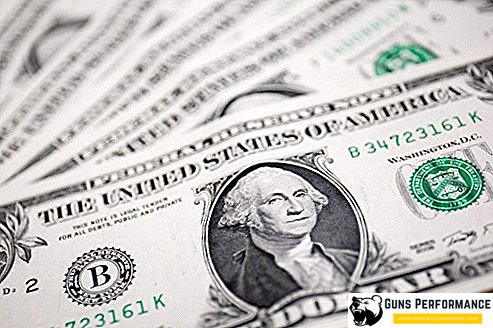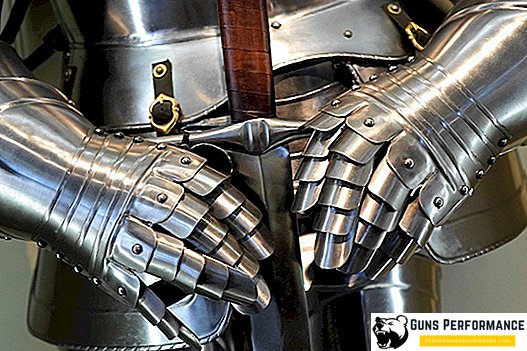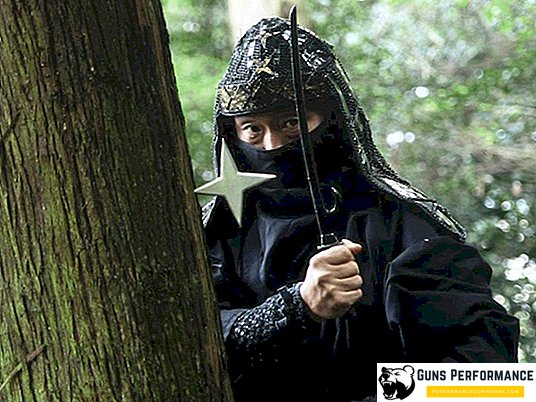Shuangou is a pair of Chinese weapons that allow the master to use various combat techniques. The history of the early types of these weapons begins in the III century BC. It is not known exactly how the shuangou sabers appeared, but at that time these swords were called "tiger's twin hooks".
The weapon is considered universal in the hands of the master. During the rule of the Song and Qing dynasties, it was very popular among Chinese monks. At present, in the Shaolin monasteries located in China, one can study the technique of this ancient edged weapon.
Shuangou Weapon Features
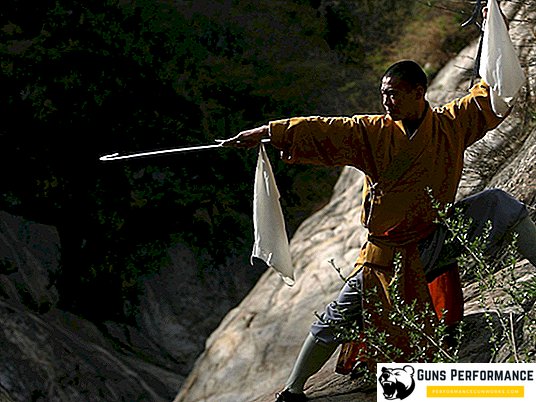
The shuangou saber, popular in Asian countries, consists of:
- Blade having unilateral sharpening. This is a steel long strip used to apply chopping strikes and hook hooks;
- A handle, over which a crescent-shaped blade with a pointed concave part and the outer non-cut side is attached by means of two mounts. Handle wrapped in leather or cloth. Months-shaped guard, with pointed sharp ends can be struck in the face or body of the enemy;
- Hook on the far end of the blade;
- The back of the weapon, made in the form of sharp knives, designed for striking in melee.
The concave part of the crescent was sharpened into a razor, which allowed not only to use it as a guard, but also to attack the enemy as brass knuckles. The shape of the shuangou parts and the availability of additional devices made it possible to work with sabers not only in pairs, but also as one weapon, linking them with upper hooks.
Many similar samples of Chinese sabers were found among the artifacts of the Song dynasty, ruling from the 10th to the 13th century, but most of them are sabers, one end of which is bent in the form of hooks, dated back to the Qing dynasty (XVII – early XX century). Judging by the excellent condition of the surviving specimens, it is not a military weapon, since there are no characteristic chaff marks on it. At the same time, modern Shaolin monks achieved perfection in the use of shuangou, which is constantly demonstrated in training and performances.
Description of Chinese specific weapons
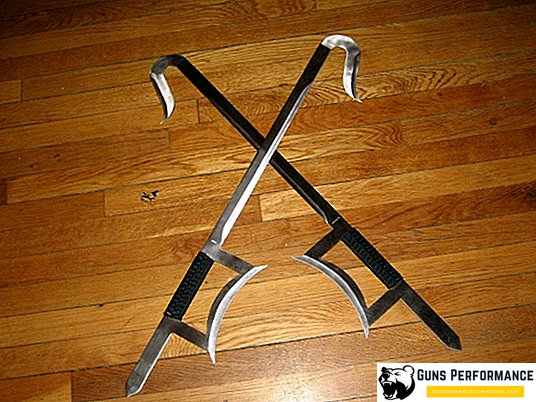
The main feature of the classic version of shuango is a specific form. This weapon will not be confused with anything. Although at first glance such sabers are more like invented anime weapons, experienced Qing-era warriors could use it instead of a sword, an ax, and even a flexible sectional pole.
Shuangou length is about 1 meter. The inner side of the long steel strip, the concave part of the crescent, the hook is sharpened on both sides. The following types of such weapons have been encountered in China:
- Tiger head hooks are the most popular species;
- Sickle claw sickles;
- Sickle chicken saber.
Sickles differed from the basic variant by additional elements in the form of rooster spurs or chicken claws, hence the name.
A variety of techniques with shuango doubles sabers
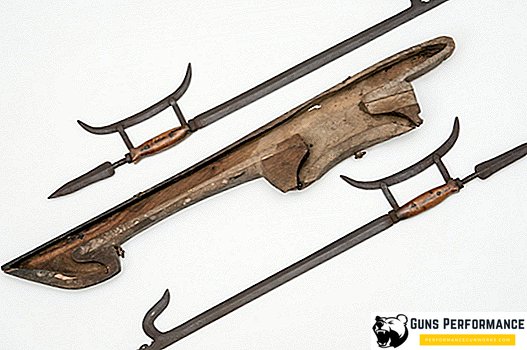
Features of the weapon are revealed mainly in the pair version. There are many specific attacks, hooks, hooks, which proves that these weapons were often used against riders. The basic technique of working with paired shuangou includes:
- Normal chopping saber blows;
- Hooks and hook blows, and used both internal and external surfaces;
- Fisted blows with a stick pointed in a concave area;
- The jab hits the ends of the guard;
- Prick the back side of the handle.
When the hook was blunted, the warrior turned the weapon over and took it for a hook, which allowed the use of shuango as an ax (the guard played the role of a chopping blade).
How did the Chinese invent such exotic weapons?

Some believe that in China, the Shuango was owned by entire detachments of trained warriors. In fact, working with this specific weapon requires a long preparation, especially in the double version. For years, there was no point in teaching warriors hundreds perished on the battlefield. The main Chinese melee weapon (as in other countries) is a spear or lance. Arming yesterday’s peasants with spears, it was possible to teach them the basics of battle in a week.
In reality, shuangou was invented by either noble warriors of antiquity who are not participating in real battles, or Chinese monks who have been able to hone their skills with weapons of specific design and such unusual hooks for years. The fact is that the warriors of the Song era, protected by the Great Wall of China, developed specific weapons based on theory and real clashes with unprepared rebellious peasants. In the XIII century, the Mongols, with an army 100 times smaller than China, and armed with simple weapons, such as sabers and bows, proved that a theory without practice is worthless.
The weapons tested by many peaceful centuries turned out to be completely unsuitable for mass wars. The master with shuangou could fight off opponents, even surrounded on all sides, but he was easily shot with bows.
The main disadvantages of shuangou

The study of the Shuango combat technique proves that this weapon has several flaws that prevented it from becoming popular:
- The impossibility of making scabbard. The maximum that a warrior could hope for was to make a loop or a mount for carrying the shuangou;
- The need for long workouts;
- There is no opportunity to fight in close formation, and the army without a system turns into an unorganized crowd.
That is why this specific weapon became popular with the Shaolin monks, whose main goal was self-improvement, although there were some characters who mastered shuango on the battlefield.
Currently, the art of possession of shuango can be learned in a number of Eastern martial arts schools, especially Wushu and Kung Fu. Estets wishing to explore all the movements from primary sources can be advised to study at the Shaolin Temple Monastery.


